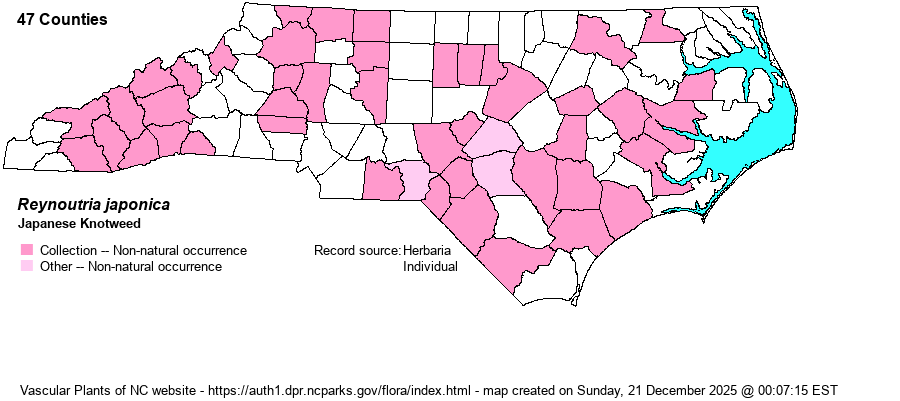Show/Hide Synonym
| taxonName | relationship | relatedTaxonName | relatedTaxonRefText | relComments |
|---|
|
|
| Reynoutria japonica | = | Polygonum cuspidatum | Gleason and Cronquist (1991) | | | Reynoutria japonica | = | Polygonum cuspidatum | Fernald (1950) | | | Reynoutria japonica | = | Polygonum cuspidatum | | | | Reynoutria japonica | = | Polygonum cuspidatum | Radford, Ahles, and Bell (1968) | | | Reynoutria japonica | = | Polygonum cuspidatum | Wofford (1989) | | | Reynoutria japonica | = | Polygonum cuspidatum | Flora of West Virginia | | | Reynoutria japonica | = | Polygonum cuspidatum | | | | Reynoutria japonica | = | Polygonum cuspidatum | | | | Reynoutria japonica | = | Fallopia japonica var. japonica | Flora of North America (1993b, 1997, 2000, 2002a, 2002b, 2003a, 2004b, 2005, 2006a, 2006b, 2006c, 2007a, 2009, 2010) | | | Reynoutria japonica | = | Fallopia japonica var. japonica | | | | Reynoutria japonica | = | Fallopia japonica var. japonica | | | | Reynoutria japonica | = | Pleuropterus zuccarinii | Small (1933, 1938) | | | Reynoutria japonica | = | Fallopia japonica | | | | Reynoutria japonica | = | Fallopia japonica | Zika & Jacobson (2003). Key based on Zika & Jacobson (2003). | | | Source: Weakley's Flora |
|

